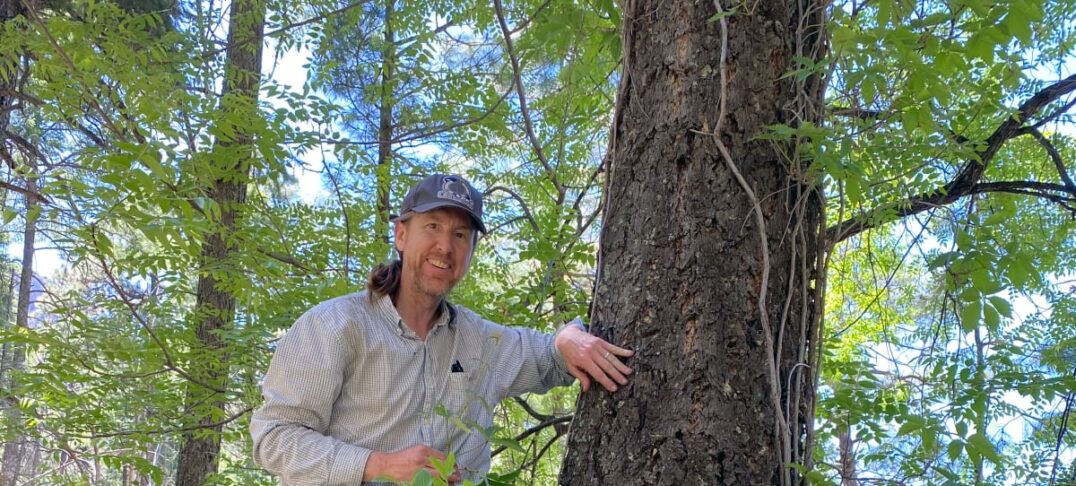James Verrier Publishes Field Guide To The Trees Of The Gila Region Of New Mexico

It’s been a busy few years for Jim Verrier. Not only is he pursuing a Master of Science in Environmental Studies, but he also conducts research at the University of Arizona School of Plant Sciences and directs a non-profit native plant nursery, emphasizing sustainable nursery practices. Now there’s another line to add to his resume: this March, the University of New Mexico Press published a book that Jim co-authored, Field Guide to the Trees of the Gila Region of New Mexico.
One of Jim’s passions has long been conducting field botany in the Arizona sky islands, and the Gila Wilderness more broadly. “The Gila has always felt like home to me,” Jim explains, adding that “it shares nearly half of its flora with the Arizona sky islands.” These are mountain ranges where a dramatic increase in elevation supports a range of biological diversity very different from the surrounding landscape.
“The Gila Wilderness is the first place in the world that received a wilderness designation,” explains Jim. “This is where Aldo Leopold pioneered environmental conservation nearly a century ago. It is a magnificent 3.5-million-acre National Forest, with abundant water resources and here, the trees grow tall.” Studying such areas in the age of accelerated climate change, however, requires paying increasing attention to the impacts of prolonged droughts on local flora.
Field Guide to the Trees of the Gila Region of New Mexico offers dichotomous keys to orders, families, and genera, while providing detailed species descriptions, ethnobotanical, entomological, and ecological connections for each tree presented. This book will be a useful resource for scientists, but it should also be appreciated by recreational users of this unique forest.
As Jim works toward the completion of his MS in Environmental Studies at Prescott College, he describes the program as “an amazing experience.”
“My favorite part of this process has been the application of new subject material to my ecosystem, which has afforded me an opportunity to learn much more about the fascinating place where I live: the mountainous borderlands of southeastern Arizona. It has been incredible working with and learning from the amazing and passionate instructors,” added Verrier.